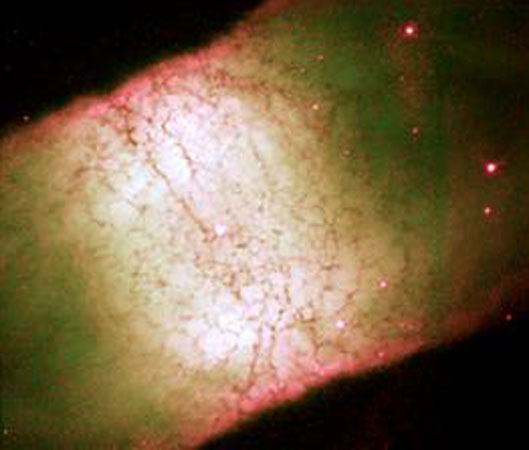
|
Explanation: How can a round star make a square nebula? This conundrum came to light with the discovery of planetary nebulae like IC 4406. IC 4406 is most probably cylindrical, with its square appearance the result of our vantage point in viewing the cylinder. Hot gas is known to be flowing out the ends of the cylinder, while filaments of dark dust and molecular gas lace the bounding walls. The star primarily responsible for this interstellar sculpture can be found in the planetary nebula's center. In a few million years, the only thing left visible in IC 4406 will be a fading white dwarf star.
|
January February March April May June July August September October November December |
| ||||||||||||||||||||||||||||||||||||||||||||||||
NASA Web Site Statements, Warnings, and Disclaimers
NASA Official: Jay Norris. Specific rights apply.
A service of: LHEA at NASA / GSFC
& Michigan Tech. U.
Based on Astronomy Picture
Of the Day
Publications with keywords: nebula - planetary nebula - IC 4406
Publications with words: nebula - planetary nebula - IC 4406
See also:
- APOD: 2025 August 31 B NGC 7027: The Pillow Planetary Nebula
- APOD: 2025 August 22 B A Tale of Two Nebulae
- APOD: 2025 August 5 B NGC 6072: A Complex Planetary Nebula from Webb
- APOD: 2025 July 29 B A Helix Nebula Deep Field
- APOD: 2025 July 13 B Planetary Nebula Mz3: The Ant Nebula
- APOD: 2025 June 9 B Between Scylla and Charybdis: A Double Cosmic Discovery
- APOD: 2025 May 14 B NGC 1360: The Robins Egg Nebula
